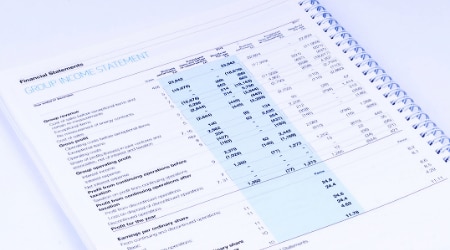Operating costs can make up a substantial portion of your total production expenses. As a manufacturer, you'll need to manage operating expenses. This can be done in a way where you can achieve desired returns and efficiency for your business.

Operating Costs: Definition, Formula, and Example
In this article, you will learn:
- What is Operating Cost
- Formula and Calculation for Operating Cost
- Deciphering Operating Costs
- Operating Costs Components
- Fixed Costs
- Variable Costs
- Real-World Example
- What Is Operating Expense?
- Understanding Operating Expense
- Capital Expenses
- Capital Expenses vs. Operating Expenses
- Operating Expense vs. Non-operating Expense
- Operating Expenses on Income Statements
What are Operating Costs?
Operating costs refer to the costs incurred as part of maintaining the day-to-day operations of your business.
These include operating expenses like:
- rent
- inventory costs
- equipment
- insurance
- payroll
- marketing
- other overhead costs.
Operating costs do not include non-operating expenses as they are not related to the core operations of your business. Non-operating expenses includes interest charges, loss on the sale of assets, cost of investments, etc.
You'll need to deduct operating expenses from your total business revenue to calculate the operating income of your business, which is income generated from your business’s ongoing operations.
Operating costs are reflected in your company's income statement after the gross income has been calculated. This is deducted from your gross income to calculate your business’ net income, which is last item that'll appear on your company’s income statement.
Formula for Calculating Operating Costs
Operating Cost Formula
To determine your business' operating costs, you'll need to go through your income statement for the specific accounting period, then use the following formula:
Operating Cost = Cost of Goods Sold (COGS) + Operating Expenses (OPEX)
COGS includes all expenses that are directly associated with the production of goods or services, including the following expenses:
- Direct material cost
- Direct labor cost
- Rent of plant or manufacturing unit
- Wages
- Costs of repair
- Utility costs and taxes
Operating expenses are the costs that you incur to conduct normal business operations and are not accounted for in the COGS. This means operating expenses do not form part of the Cost of Sales as they are not directly linked to the production of goods or services.
Operating expenses include selling, general, and administrative expenses, such as:
- Inventory cost
- Cost of advertising and marketing
- Payroll
- Cost of research and development
- Insurance premium
- Rent
- Equipment
Calculating Operating Costs
To calculate the operating cost, you'll first need to determine the Cost of Goods Sold (COGS), using the following formula:
COGS = Opening Stock + Purchases + Direct Expenses – Closing Stock.
Then, calculate the total operating expenses before adding COGS and operating expenses to determine the total operating cost of your business.
Deciphering Operating Costs
It is important to keep a track of your business’s operating costs and non-operating costs. This helps you analyze how each of the costs is linked to your business’s revenue-generating activities and helps you to know whether you can run your business efficiently.
Using this information you can be more informed when making certain business decisions, like if you know how much your business has spent on staff salaries then you can decide whether to hire or to lay off employees.
You'll want your business operations to maximize business earnings, these depend on the amount of revenue generated and expenses incurred to operate the business.
Accordingly, there can be two possibilities to increase your business earnings, either by increasing your revenue or reduce your operating cost.
Typically, you'll start by cutting down operating costs as it seems to be an easy and approachable way of increasing your business profits. However, reducing your operating costs by too much can negatively impact productivity and the overall profit of your business.
Your business profits may increase in the short-term if you choose to reduce specific operating costs, these decisions can impact business earnings in the long-run.
For instance, laying off specific salespeople may increase your short-term profit, but it will reduce your capacity to generate new business which will hurt your earnings in the long-term.
The ideal situation is keeping your business operating costs to the minimum, while increasing sales.
Operating Costs Components
Typically, business operating costs are divided into two categories, fixed costs and variable costs.
Fixed Costs
Fixed costs do not change when the output of goods or services changes, meaning these costs remain constant with an increase or decrease in the volume of output. Nor do they change over the life of a contract agreement or cost schedule.
Your business has to pay fixed costs regardless of whatever specific business activities occur. Both fixed and variable costs together result in the total costs of your business operations.
As a business owner, you determine the fixed costs via contract agreements or cost schedules. These are the foundational costs that you'll incur in order to carry out business operations.
For example, if you're starting a new business, your initial fixed costs will include the rent of the manufacturing premises and employee salaries. You'll need to regularly check the fixed cost contracts because these costs may change over a period of time. This often happens when you enter into new contractual agreements, or prepare new cost schedules. However, your fixed costs will not change with the change in the level of production.
Examples of fixed costs include:
- Salaries
- Lease rentals
- Depreciation
- Interest expense
- Insurance
- Property taxes
- Certain utilities
Impact of Fixed Costs on Financial Statements
Fixed costs can decrease on a per unit basis if your business produces large quantities of goods. These costs can contribute towards economies of scale to a greater extent and can be direct or indirect.
Direct fixed costs include costs such as direct labor or rent, while, indirect fixed costs include costs like depreciation and salaries. Besides these, your business may also incur interest charges as a fixed cost.
Fixed costs in your income statement are also reflected on your balance sheet and cash flow statement. The fixed costs on your balance sheet may either reflect your short-term or long-term liabilities, whereas the fixed charges paid in cash will get reflected in your company’s cash flow statement.
Besides considering fixed costs, your business will need to keep track of its costs structures through cost statements. These statements help you in understanding your business' fixed and variable costs and how these costs impact different aspects of your business.
Variable Costs
Variable costs refer to the cost that changes with the change in the level of the output, meaning they can increase or decrease as the level of production changes.
Variable costs increase with an increase in the level of output, and decrease if the level of the output decreases.
Examples of variable costs include:
- The cost of raw material
- Packaging
- Utility costs
- Direct labor cost
- Sales commission
The per-unit variable cost of production remains consistent for a given level of output, but the per-unit variable costs will increase as the volume of output increases.
Likewise, the per-unit variable costs will decrease with if the level of output decreases. This means you can calculate the total variable cost of your business operations by multiplying the quantity of output with variable cost-per-unit of output.
Whether your business makes sales or not, you will have to incur the fixed costs.
Real-World Example
The following is the income statement of Microsoft Inc for the year ended June 30, 2020, in which Microsoft reported total revenue of $143.015 million during the accounting period.
- Total COGS or Cost of Revenue: $46.078 million
- Total operating expenses: $43.978 million
- Total operating costs: $46.078 million + $43.978 million = $90.056 million
The total operating cost of Microsoft Inc must be analyzed over different quarters in order to understand whether Microsoft Inc is managing its operating costs effectively. In addition to this, investors can also access Microsoft’s operating expenses and cost of sales independently, which provides a guide on whether costs are increasing or decreasing over a period of time.
What are Operating Expenses?
Operating expenses are expenses that your business incurs over the normal course of its operations. These include inventory costs, rent, marketing, payroll, research, and development, etc.
As a business owner, it is important for you to monitor the operating expenses of your business. This helps determine the ways you can reduce these expenses while still remaining competitive in the market.
Understanding Operating Expense
Generally, operating expenses are incurred mandatorily, but you can reduce your operating expenses to remain competitive in the market and increase your profits.
Doing so, however, may have an impact on the quality of your business operations. Because of this risk, you'll need to reduce operating expenses without compromising quality, and doing so will yield significant benefits.
Capital Expenses
Capital expenses are separate from your business’s capital expenses, and is the money invested in purchasing tangible or intangible fixed assets. Tangible assets include purchasing office furniture, factory, equipment, and other physical capital assets, while intangible fixed assets include copyright, patent, trademark, and intellectual property.
Capital Expenses Vs Operating Expenses
Capital expenses are treated differently than operating expenses. Operating expenses are the expenses that you incur as a business mandatorily because they help you to carry out business operations. You can also write off the total operating expense for the year in which you incur as an expense.
For example, say your business invests $50,000 for an employee salary, you can write off the entire expense over the accounting year, which is the year when an expense is incurred.
However, the amount you invest in capital assets, like plant and machinery, needs to be capitalized, meaning you need to write off such expenses over a period of time.
For example, if you've invested $200,000 in plant and machinery, you'll need to write off this capital expense over the useful life of the plant and machinery.
Operating Expense vs. Non-operating Expense
Operating expenses are the expenses directly related to your business’s core operations, and include marketing, payroll, marketing costs and rent.
However, non-operating expenses are the expenses incurred for reasons not related to the core operations of your business. These expenses include interest charges, costs of relocation, and loss on sale of assets, as well as unusual costs or one-time charges.
For example, if your business undergoes reorganization due to bankruptcy, or you are required to pay any lawsuit charges, all these are considered one-time costs and form a part of the non-operating expenses.
Non-operating expenses appear below the operating expenses in your income statement. This is because it allows you to assess the core operations of your business, so your company’s revenue is the first item that appears on the income statement.
From there, you deduct COGS from revenue to determine your company’s gross income and then subtract all the operating costs of your business from the gross income to calculate operating profit.
Following that, record all the non-operating expenses below the operating profit in the income statement, then deduct all the non-operating expenses from operating profit to calculate Earnings Before Taxes (EBT). And finally, you reduce taxes from EBT to arrive at your Net Income.
Operating Expenses on Income Statements
Operating expenses are shown in your company’s income statement, and is recorded to determine its capacity to generate profits.
Your income statement groups the expenses into different categories, such as:
- COGS
- Selling, General, and Administrative Expenses
- Depreciation and Amortization
- Other operating expenses
- Interest expense
- Income taxes
As a result, all the above expenses, excluding income taxes and interest, are your business’ operating expenses.
















